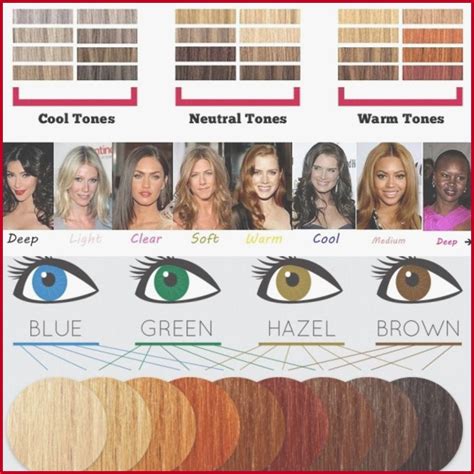Choosing a hair color that complements your skin tone is key to achieving a flattering and cohesive look. With a wide range of shades available, it can be overwhelming to determine which one will enhance your natural beauty. This comprehensive guide will help you unravel the secrets of finding the perfect hair color to match your skin’s undertones.

Understanding Skin Undertones
The first step in selecting the right hair color is to identify your skin’s undertones. Undertones are the subtle hues that lie beneath the surface of your skin and determine its overall color. There are three main undertone categories:
- Cool: Skin with pink, red, or blue undertones
- Warm: Skin with yellow, peach, or golden undertones
- Neutral: Skin with a balanced mix of both cool and warm undertones
Hair Color Recommendations
Based on your skin’s undertones, here are some general hair color recommendations:
Cool Undertones
- Brunettes: Chocolate brown, mahogany, raven black
- Blondes: Platinum blonde, ash blonde, silver blonde
- Reds: Cool auburn, burgundy, chestnut
Warm Undertones
- Brunettes: Caramel brown, honey brown, golden brown
- Blondes: Strawberry blonde, golden blonde, warm blonde
- Reds: Copper red, orange-red, brick red
Neutral Undertones
- Brunettes: Any shade of brown
- Blondes: Any shade of blonde
- Reds: Any shade of red
Top Color-Matching Tips
- Consider your eye color: Blue or green eyes often complement cool hair colors, while brown or hazel eyes pair well with warm shades.
- Experiment with temporary colors: Before committing to a permanent change, try out different shades using temporary hair dyes or wigs.
- Consult a professional: A hairstylist can provide personalized recommendations based on your skin tone and hair texture.
- Avoid drastic changes: If you have naturally dark hair, going platinum blonde can be damaging. Start with gradual changes and stay within a few shades of your natural color.
- Maintain your color: Protect your hair from fading and brassiness by using color-safe shampoos and conditioners.
Common Mistakes to Avoid
- Ignoring your undertones: Choosing a hair color that clashes with your skin’s undertones can create a harsh or unflattering effect.
- Over-dyeing: Excessive dyeing can damage your hair and make it more prone to breakage.
- Using the wrong developer: Choosing the wrong developer strength can result in uneven color or hair damage.
- Applying bleach incorrectly: Bleaching can be a harsh process. Follow the instructions carefully and avoid leaving the bleach on for too long.
- Not consulting a professional: While home hair dyeing can be convenient, it’s advisable to consult a professional for complex or drastic color changes.
Frequently Asked Questions
- How often should I get my hair colored?
-
The frequency depends on the type of color and your desired maintenance level. Root touch-ups for permanent color may be needed every 4-6 weeks, while semi-permanent and temporary colors fade gradually over time.
-
Can I color my hair if I have sensitive skin?
-
Consult a dermatologist before coloring your hair if you have sensitive skin. They can recommend gentle hair dyes or suggest alternative options such as henna or natural hair masks.
-
What hair colors make me look younger?
-
Highlights, lowlights, and balayage techniques can add depth and dimension to your hair, creating a more youthful appearance.
-
How can I repair damaged hair from coloring?
-
To repair damaged hair, use protein-rich hair masks, deep conditioners, and heat protectant sprays. Regular trims can also remove split ends and promote healthy hair growth.
-
What hair color trends are expected for this season?
-
Stay up-to-date on the latest hair color trends by consulting fashion magazines, online beauty blogs, and social media platforms. Current trends include vibrant reds, platinum blondes, and natural-looking balayage.
-
How can I find inspiration for new hair colors?
- Explore social media platforms like Pinterest and Instagram for hair color ideas. You can also search for celebrity hair transformations or consult with a professional hairstylist who can provide personalized recommendations based on your preferences and skin tone.
